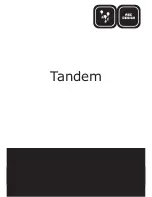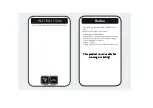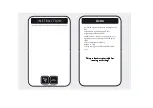
© Interleader Limited 2017
24 of 30
Printed: 06/09/2017
24.3 VHF Cable
For a long run you may want to use RG213 cable (this has an outside
diameter of 10.3mm).
For a short run you may want to use RG58 cable (this has an outside
diameter of 4.99mm).
At the controller end you will need to terminate in an SMA plug (which
may require the use of a reducing adaptor if RG213 cable is used).
When installing cable it is not just the diameter of the trunking but two
areas are critical and the contractor should be aware:
1) All cables are specified with a Minimum Bending Radius
(MBR). Check the data sheet but this is usually a minimum of
10 times
the diameter so for the RG213 above is 103mm (4”)
2) Kinking or twisting of the cable must be avoided. If a cable is
‘bent’, even when straightened out again, the internal core will
be permanently damaged and cause additional loss and
unwanted signal reflections in the cable.
Customers are advised to make sure that:
1) Their contractor is experienced in installing and terminating
such cables
2) The cable-ways, ducts, trunking etc. allow for easy bends that
exceed the MBR and provide good support
3) The installation work is closely monitored
4) Their installer performs a TDR (Time Domain Reflectometry)
test and presents this as part of his certification of installation
(the TDR test will both demonstrate that the cable has not
been damaged and provide you with a reference document for
future audits or checks).
24.4
Installation
Figure 17 gives a suggested general layout for an antenna
installation. Your installer will be able to advise on the details specific
to your installation.
24.5 Multiple Antenna
Where an RLC is to be installed at a facility with other Airband VHF
transmitting devices a separate antenna
must
be used for the RLC.
To avoid interference or damage to the RLC, the RLC and other
device’s antenna should be either:
1) Located some distance apart horizontally (greater than 10
meters), or
2) If located on the same mast, aligned vertically one above the
other with an ideal separation of at least 2 meters.
Figure 18 gives the general layout:
Figure 17
Figure 18







































